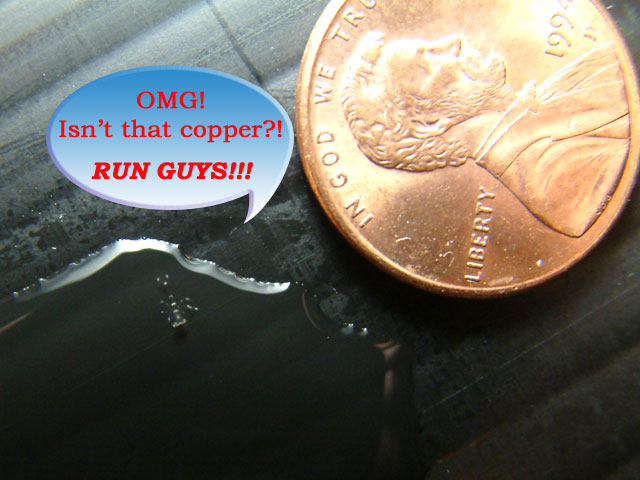Photographing Tiny Subjects
You will recognize some or most of these images, but I was thinking how it would be nice to put these in one webpage, especially describing the techniques used to get the images.
In the past couple of weeks, I have had three opportunities to photography newly released baby Peppermint Shrimp in my tank. I didn't even know what they were at first, but it was fascinating to study them up close. However, shooting them with my digital camera was challenging.
I have a Fuji S602Z, which is a Prosumer digital camera with a built-in lens. Review on dpreview.com
All of my images are shot or video'd using what the camera comes with. Rarely do I use the built in flash.
These images were taken late at night when the lights were off. The first image is with the flash, to show you want I noticed one night. I don't remember my camera setting for this, but it might have been in Auto mode due to it being a simple shot, in Macro mode.
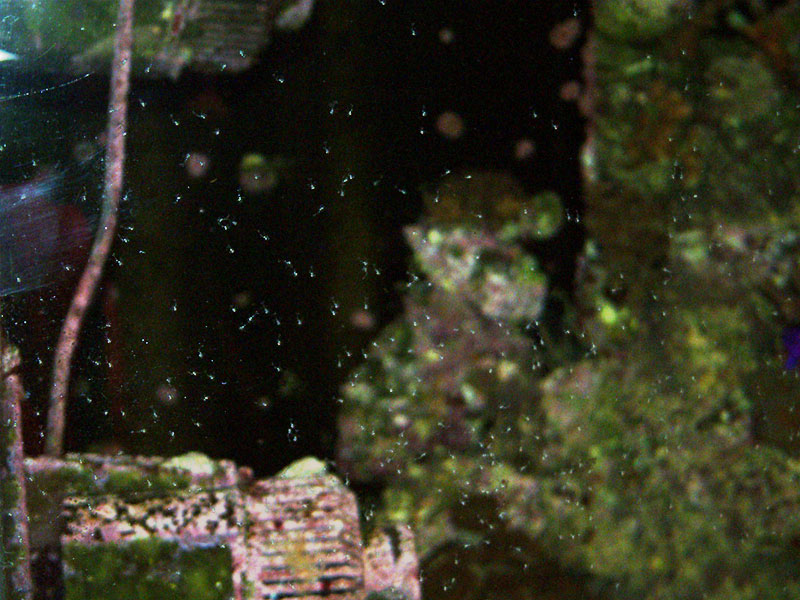
Now, these little guys jerked around in the water with all the pumps off. Getting them focused was extremely tough due to their speed, so I set my camera to ISO1600, the highest setting I had. Lighting was a single flashlight pointed straight down from above, which drew the shrimp like a moth to a flame.
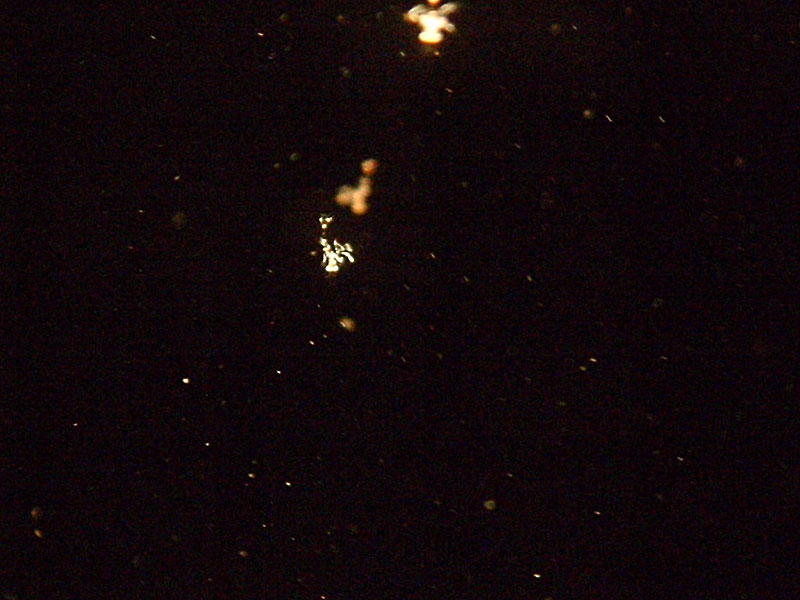
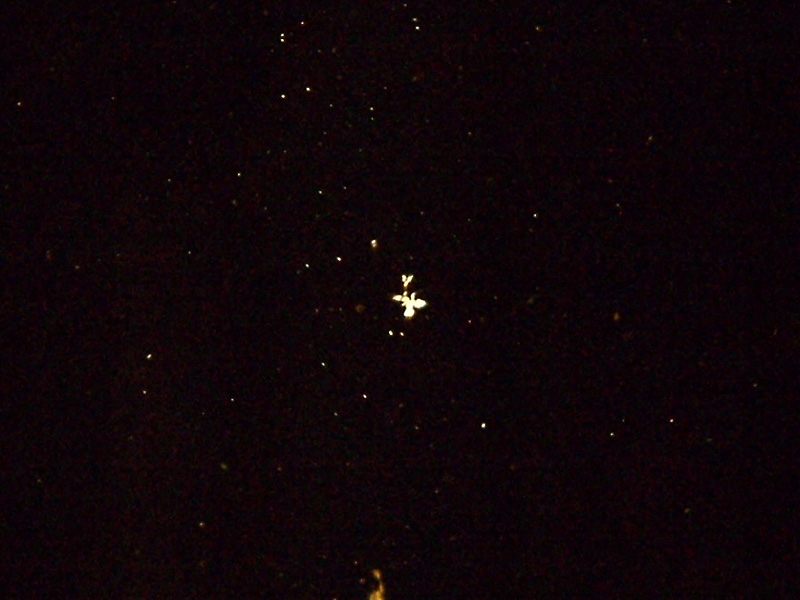
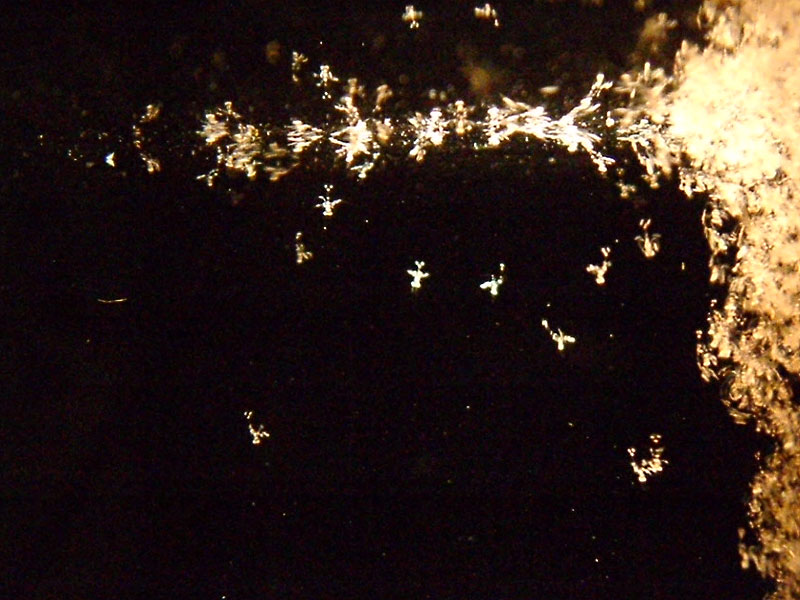
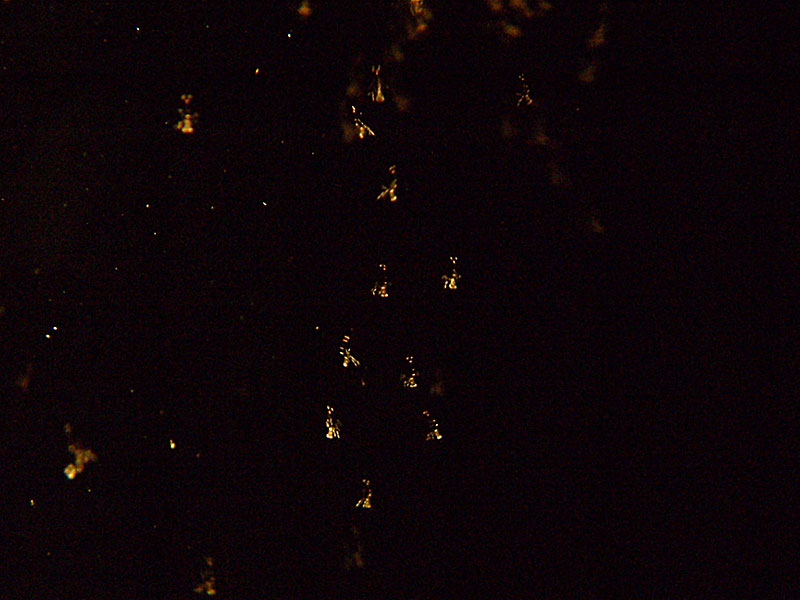
To take these images, I pressed the camera against the glass of the tank, to keep it steady. I must have taken 100 or more pictures for 15 minutes, resulting in less than a dozen good images.
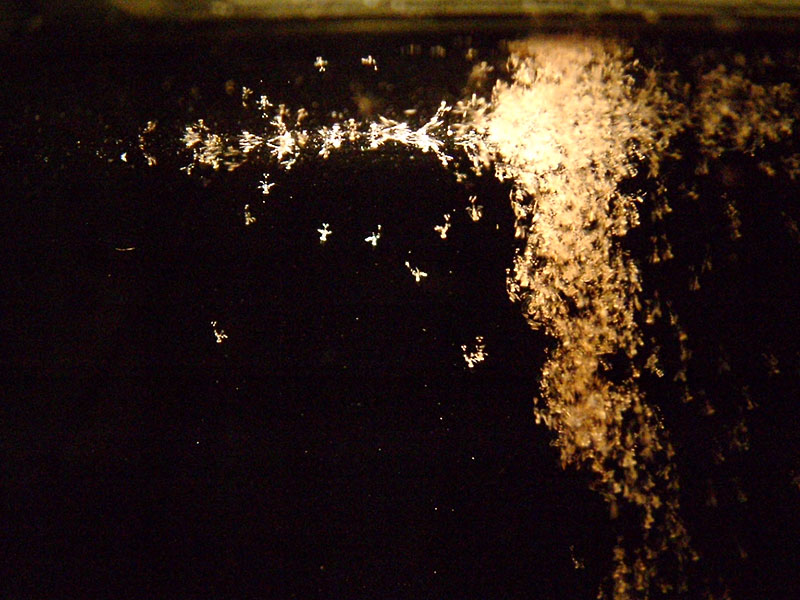
You'll notice how part of the image is over-exposed in the brightest location where the shrimp are amassed, but that is because my focus was on indiduals rather than the grouping. Plus the area where they gathered, they were cascading and twitching constantly to get away from each other while continually regrouping closest to the light. I don't even know why they are drawn toward light, since that almost assures them death by the mouth of a hungry fish. You'd think they'd hide to have the chance to grow.
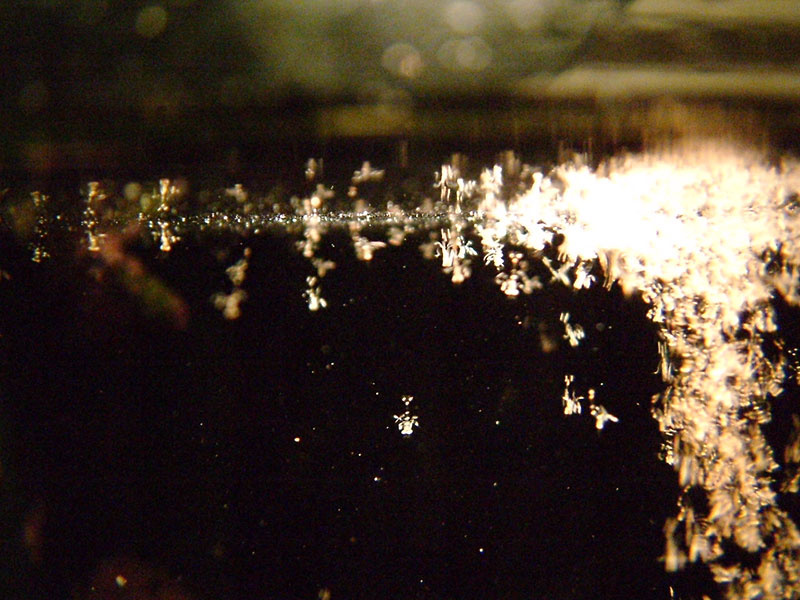
I also shot two videos that night, to help the viewer grasp these little guys a little better. Again, lighting was by flashlight, and the camera was set on a tripod. My camera doesn't shoot macro video, but it does a decent job at times. I simply had to move the camera and tripod to the sweet spot, and play with the focus until the camera locked onto the subject.
At my next opportunity, I tried a better method to photograph them more clearly. Essentially these little guys are mostly see-through at this point, and very tiny. Trying to shoot them in super macro mode was impossible in a small dish of water, so I decided to drip them onto a black background in a small puddle.
Using my famous 5100K refugium lightbulb as a source of light from the side, I was able to take these pictures. The material was some black chloroplast (sign material) and an eye dropper was used to get a few shrimp out of the container on to my 'background'. The floodlight bulb was placed to the side of the material, and I held my camera freehand, pointed directly down on the puddle. One thing I did often was adjust my angle to the subject to capture the right amout of lighting.
These were the best out of 73 shots. Due to the speed these little guys zip around, I used IS0 400, no flash, Aperature Priority, f/2.8.
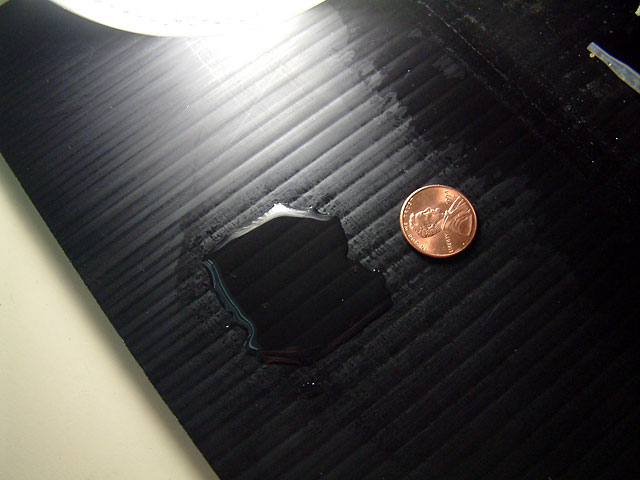
The Fuji S602Z allows the photographer to switch to Super Macro Mode, which means you can get within 1 centimeter of the object. A couple of times, I was pressing the metal frame surrounding the lens into the puddle trying to get close. This was wiped off, and the lens never got wet.
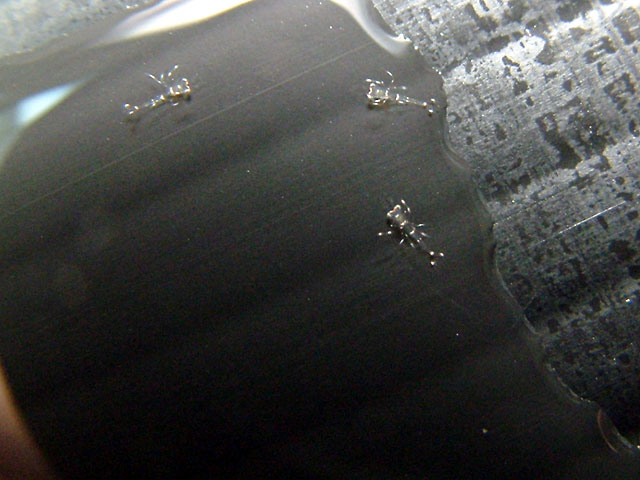
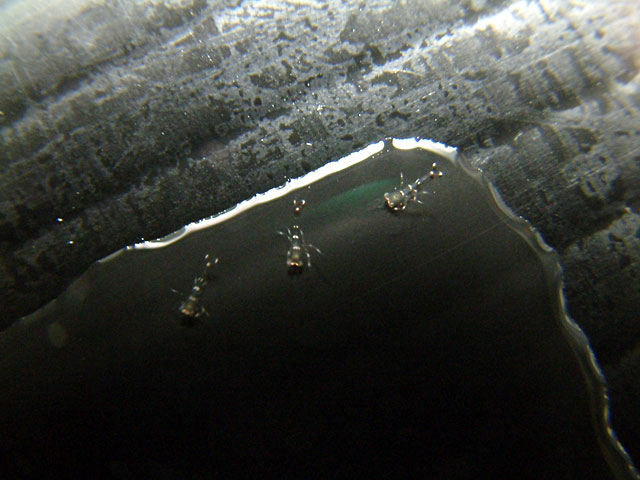
Remember, the three dots are the tail, and the larger end is the head section with a pair of huge eyes apparently. To get even larger images, using a magnification filter might work, or shooting through a magnifying glass. However, now you are juggling even more items, and that may be quite a challenge.
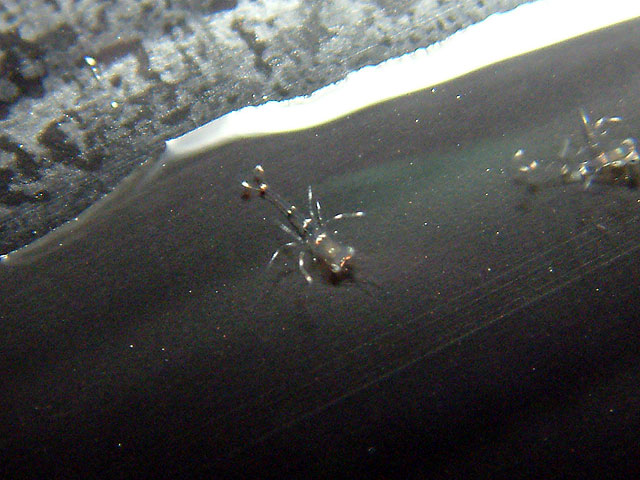
And here for a sense of scale, near a penny. Putting a familiar object in an image helps your viewer get a sense of scale.
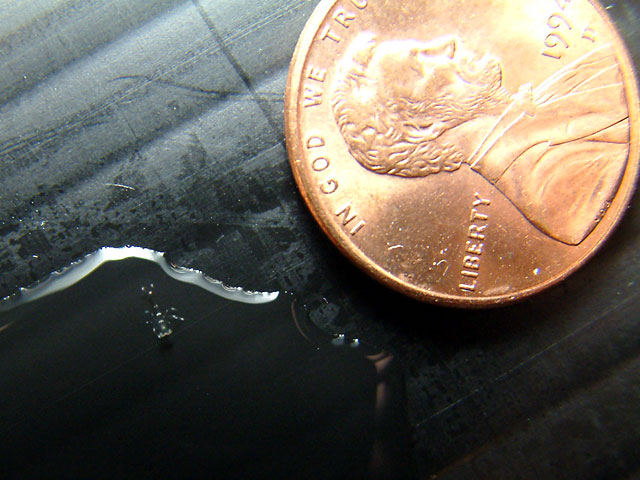
The subjects in these images were only 15 minutes old when I took their pictures. ;)
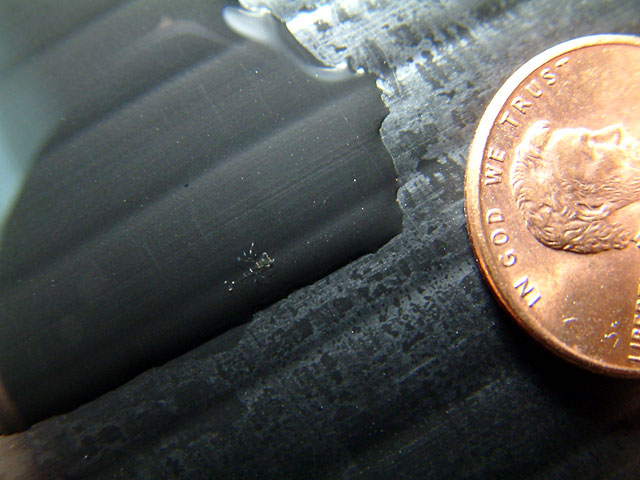
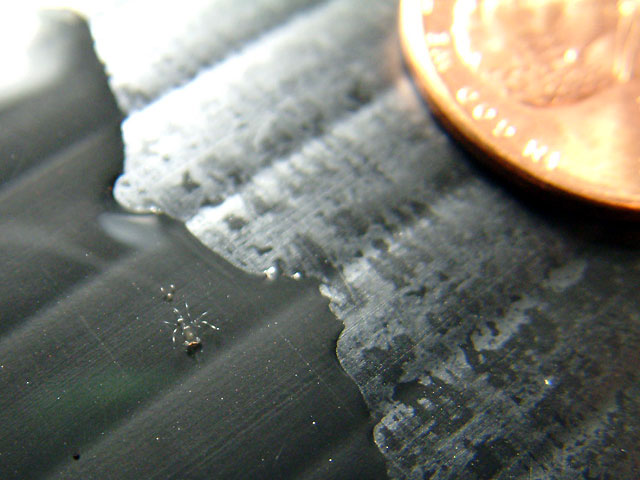
And for fun, you can use a 'thought bubble' in an image, which is available in Photoshop 7. One helpful RC member just posted how to do that, and this is the result:
